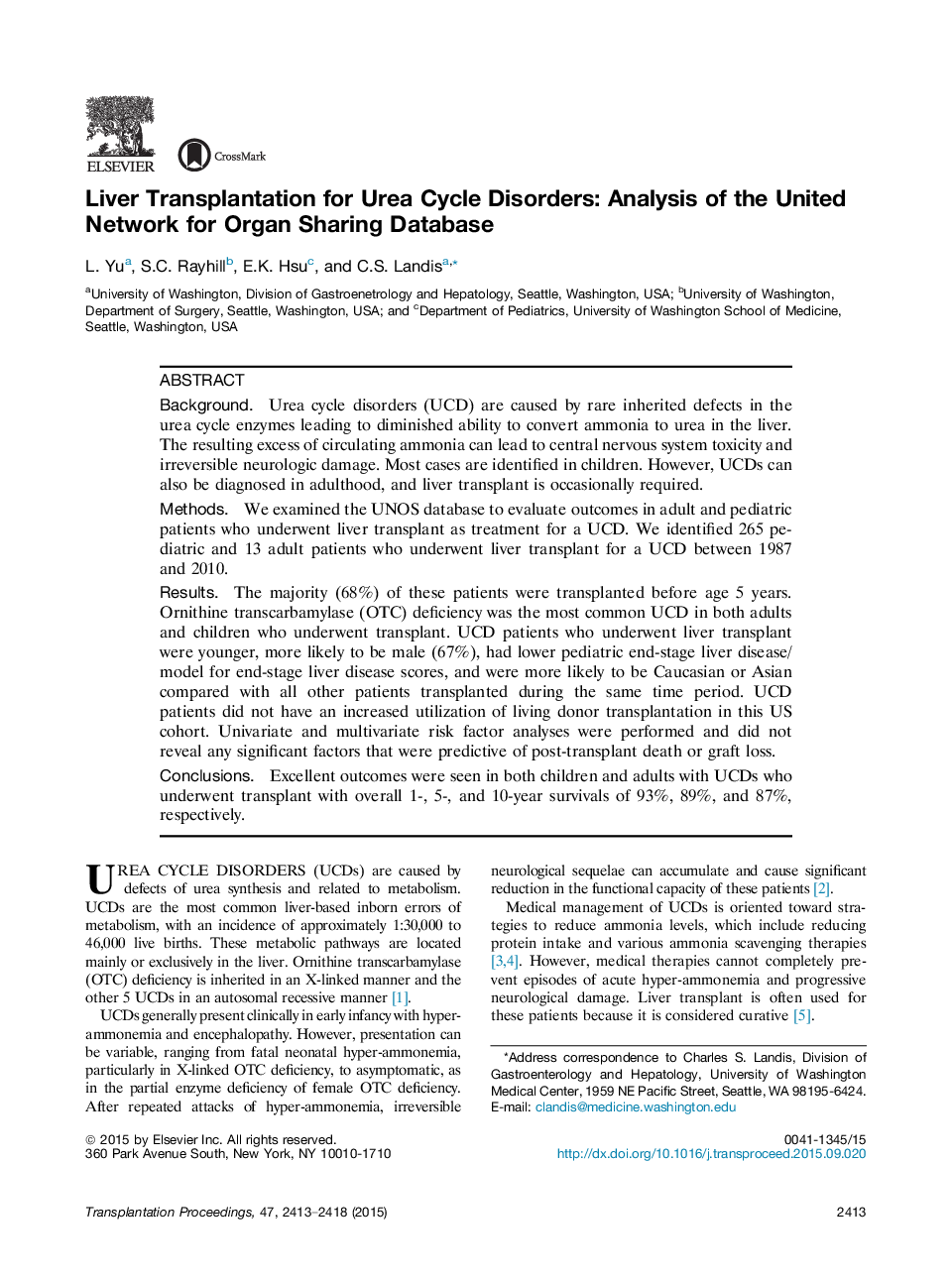| کد مقاله | کد نشریه | سال انتشار | مقاله انگلیسی | نسخه تمام متن |
|---|---|---|---|---|
| 4257015 | 1284537 | 2015 | 6 صفحه PDF | دانلود رایگان |
• We examined the UNOS database to evaluate outcomes in adult and pediatric patients who underwent liver transplant as treatment for a UCD.
• UCDs represent 2.1% of pediatric and only 0.015% of all adult liver transplants between 1987 and 2010.
• OTC was the most common UCD in patients who underwent liver transplant.
• Excellent post-transplant survival was seen in both children and adults who underwent liver transplant for UCDs.
BackgroundUrea cycle disorders (UCD) are caused by rare inherited defects in the urea cycle enzymes leading to diminished ability to convert ammonia to urea in the liver. The resulting excess of circulating ammonia can lead to central nervous system toxicity and irreversible neurologic damage. Most cases are identified in children. However, UCDs can also be diagnosed in adulthood, and liver transplant is occasionally required.MethodsWe examined the UNOS database to evaluate outcomes in adult and pediatric patients who underwent liver transplant as treatment for a UCD. We identified 265 pediatric and 13 adult patients who underwent liver transplant for a UCD between 1987 and 2010.ResultsThe majority (68%) of these patients were transplanted before age 5 years. Ornithine transcarbamylase (OTC) deficiency was the most common UCD in both adults and children who underwent transplant. UCD patients who underwent liver transplant were younger, more likely to be male (67%), had lower pediatric end-stage liver disease/model for end-stage liver disease scores, and were more likely to be Caucasian or Asian compared with all other patients transplanted during the same time period. UCD patients did not have an increased utilization of living donor transplantation in this US cohort. Univariate and multivariate risk factor analyses were performed and did not reveal any significant factors that were predictive of post-transplant death or graft loss.ConclusionsExcellent outcomes were seen in both children and adults with UCDs who underwent transplant with overall 1-, 5-, and 10-year survivals of 93%, 89%, and 87%, respectively.
Journal: Transplantation Proceedings - Volume 47, Issue 8, October 2015, Pages 2413–2418
